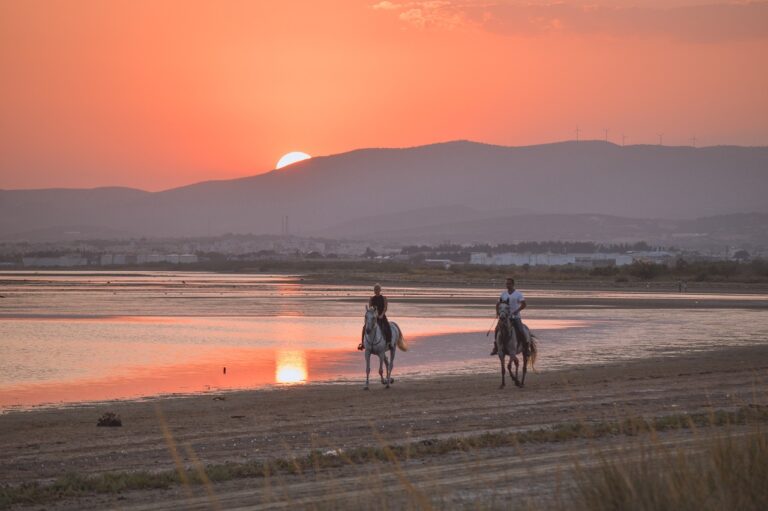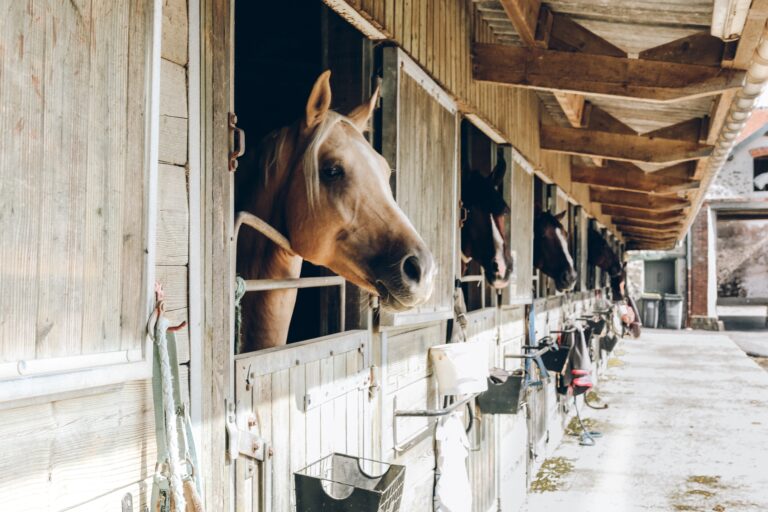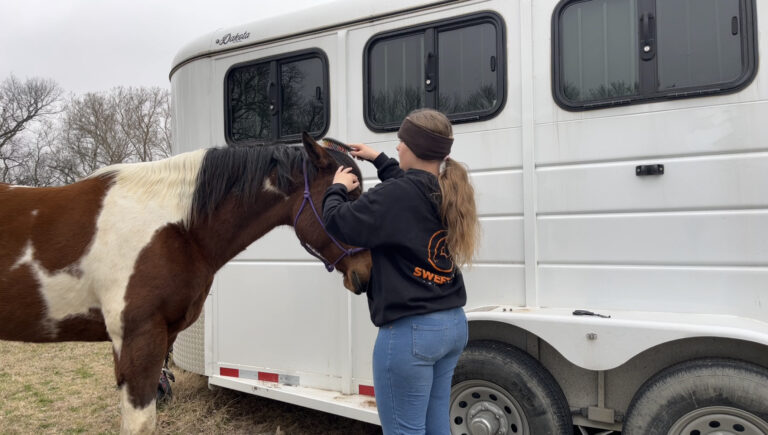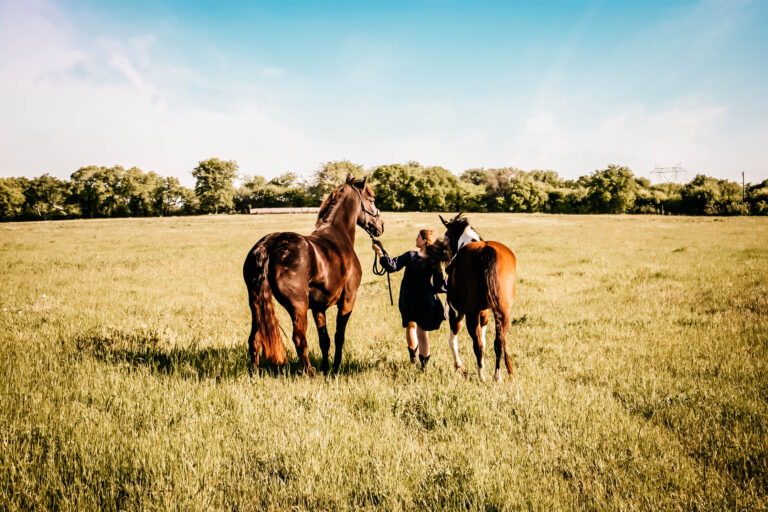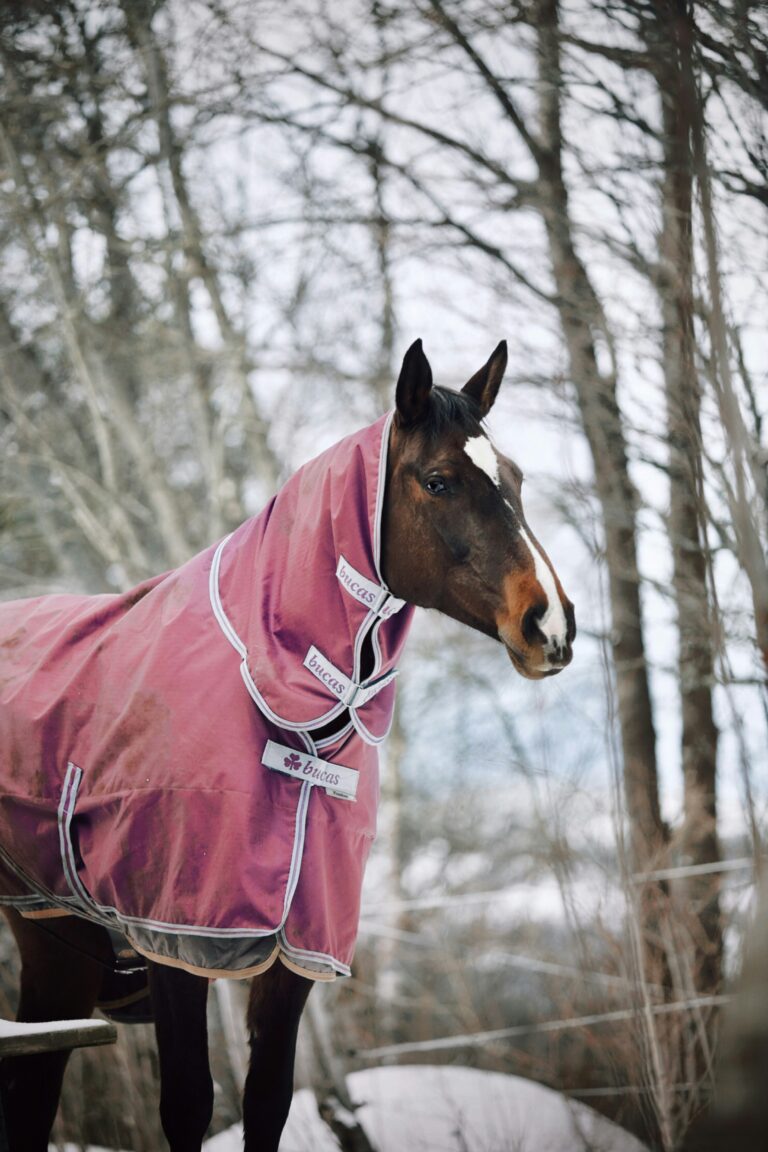Winter Grooming Guide
As winter comes around, your horse’s grooming routine has to be adjusted. Use this winter grooming guide to ensure your horse thrives in these difficult months.
Winter grooming can bring a lot of challenges like mud, long winter coats, and the cold.
Winter is the hardest time of the year for many horse owners, but with these tips your horse will be warm and happy through the cold months.
I’ll share tips for preventing mud fever, getting rid of caked on mud, and maintaining a shiny coat through the difficult weather.

These tips will make your horse more comfortable in the colder months of the year. Your horse can brave the cold while looking their best!
This guide will provide a step by step process to maintaining your horse’s coat, hooves, and more!
Your Horse’s Winter Coat
Your horse grows a longer coat in winter called a winter coat that sheds in the warmer months of spring. The coat provides natural insulation for your horse in the cold weather.
When grooming your horse, you want to make sure your horse is clean while also preserving the natural warmth they provide themselves.
You can do this by using soft brushes to remove dirt. Soft brushes distribute your horse’s natural oils and stimulate blood flow which make your horse’s coat look healthy
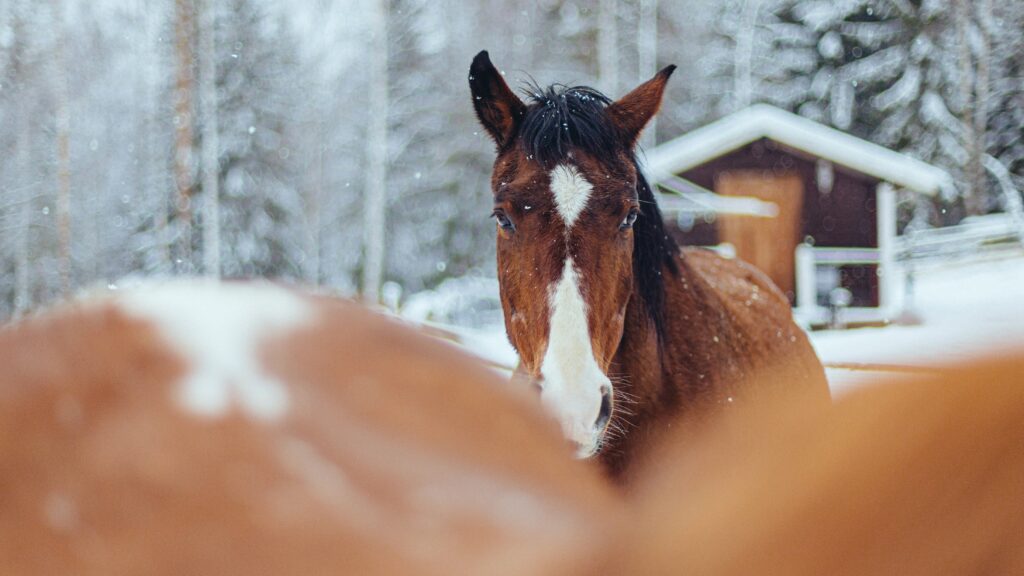
Blanketing Your Horse
Blanketing your horse in the winter can help you with your winter grooming. You can use a turnout blanket on your horse in the rainy, muddy weather to keep your horse clean.
Blanketing will make your grooming routine much easier but it will also protect your horse from the cold.
When blanketing, make sure your horse is clean and dry so you don’t trap any dirt or moisture in your horse’s coat. This can cause health issues later on.
Incorporating blanketing into your grooming will make your horse much cleaner and provide them protection from the elements.
If your are wondering if you should blanket your horse this winter, use this guide to figure out what is best for your horse!
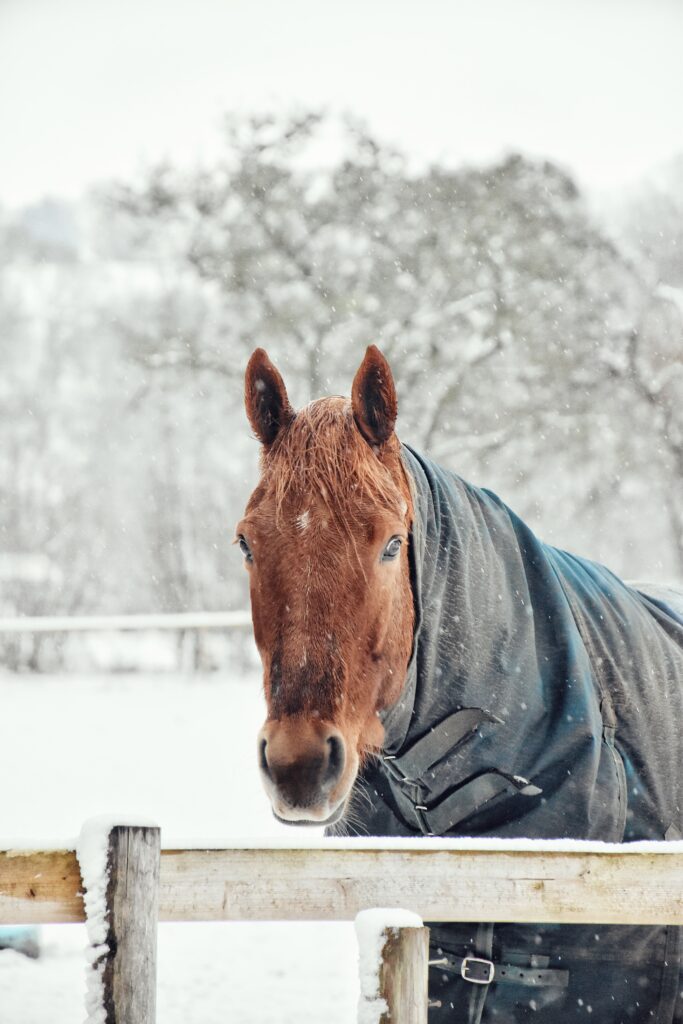
Keeping Your Horse’s Legs Clean
One of the hardest parts of grooming in winter in keeping your horse’s legs clean.
They tend to get caked with mud which can often lead to health problems. Our first big winter with Trinity we had many issues with mud fever. Don’t worry because these tips will ensure your horse’s feet stay clean all winter long!
The damp conditions of winter are the culprit when it comes to feet issues. The moisture soaks your horse’s feet making ideal conditions for bacteria to grow. The cold weather can also lead to your horse’s feet drying out.
Make sure you pick your horse’s feet every day. Getting rid of the mud will help in reducing moisture in the hoof. While you pick out the feet you can check for any health issues you may need to address.
One way to reduce mud on your horse’s legs and feet is by using petroleum jelly. Petroleum jelly creates a barrier between the mud and your horse’s leg.
We used petroleum jelly with Trinity last winter and she ended up having no issues with mud fever that year!
Using these tips your horse’s legs will stay nice and dry this winter!
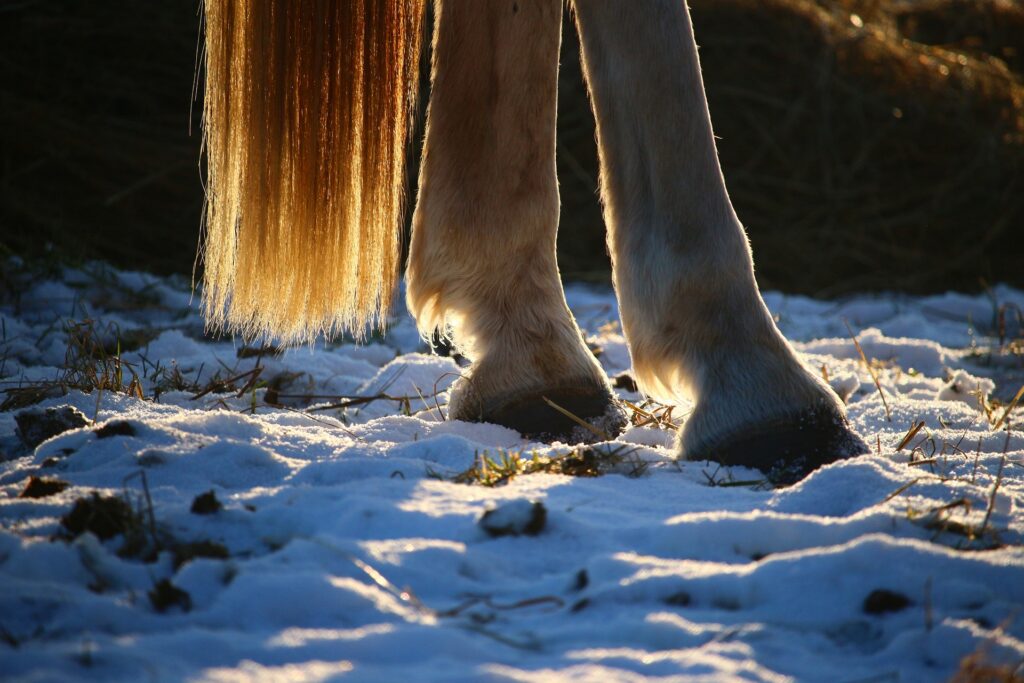
How To Keep A Grey Horse Clean
Grey horses tend to get the dirtiest making winter an especially hard time for grey horse owners.
Many owners use a turnout blanket to help them keep their horse’s clean or clip to make their coat more manageable.
I recommend using a waterless shampoo for difficult areas in the winter because this will allow you to get rid of difficult stains.
You can use a curry comb to get rid of dried mud along with a stiff brush.
For the mane and tail, many people use a tail bag in the winter. This ensures the tail is up and out of the way. You can leave a tail bag on for up to 3 weeks and can keep them in when you ride.
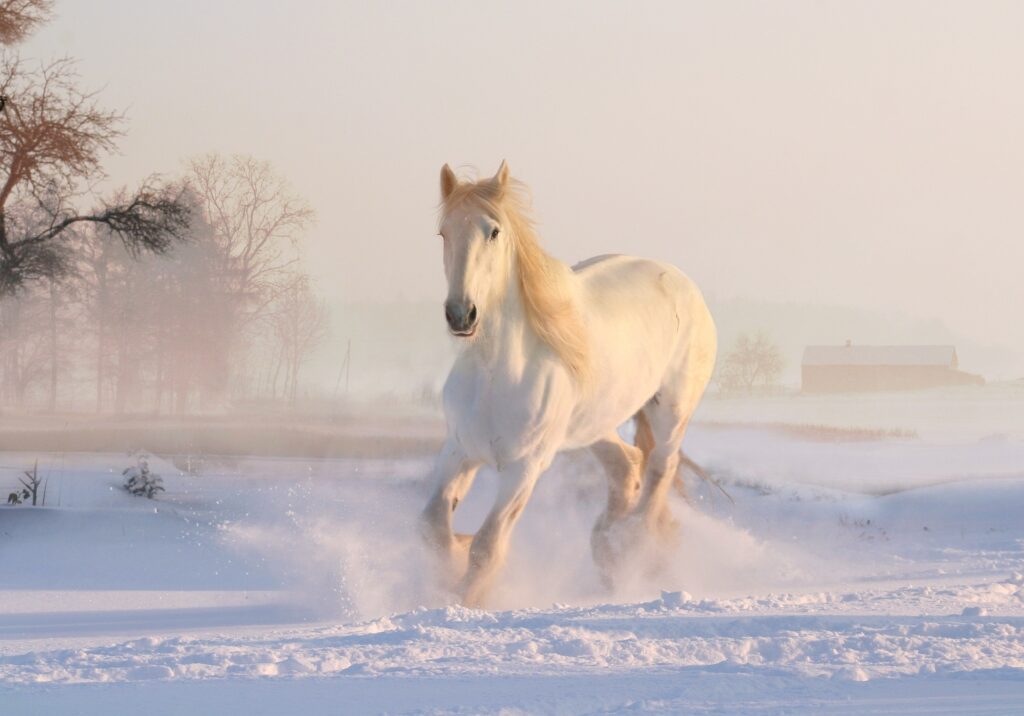
How To Get Rid Of Dust In The Winter
Getting rid of dust in your horse’s coat can be a challenge with their long winter coat. These tips will help you keep your horse looking their best in the cold weather.
You can use a damp cloth on your horse. The cloth will soak up all the dust while making sure your horse doesn’t get too wet.
One of the best ways to get rid of dust is waterless shampoo or grooming sprays. These sprays lift and remove dirt at the surface along with getting rid of stains. They are a quick solution to giving your horse a through clean.
If your horse stays in a stall, make sure to manage their bedding so dust doesn’t build up. You can get low dust bedding material like pine and cedar shavings to minimize dust.
Using these tips your horse can stay dust free all winter long!
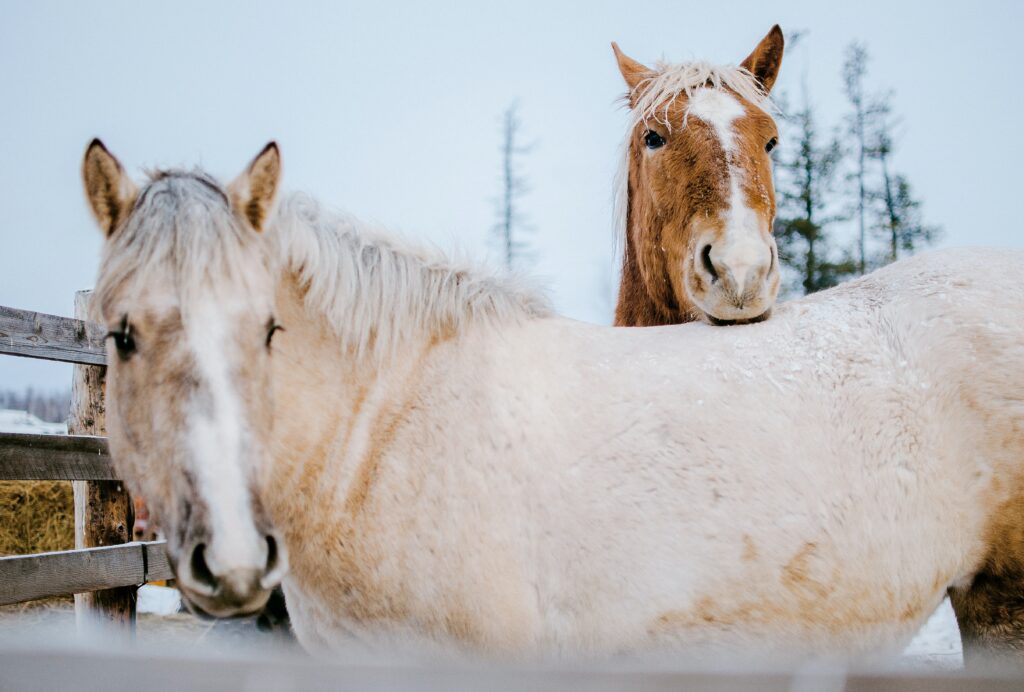
Hoof Care In the Winter
Hoof care in winter is one of the most important part of maintaining your horse’s health.
Make sure to clean your horse’s hooves regularly. This will get rid of mud and make your horse more comfortable. This also gives you an opportunity to check for any injures or health issues that may need to be addressed.
Ensure your horse’s hooves are clean and dry to prevent moisture issues. Moisture can lead to bacterial and fungal infections. You can use a towel or petroleum jelly to keep your horse’s legs dry.
Applying regular hoof conditioners will prevent the hooves from becoming overly dry and brittle. You can apply it to the hoof wall, frog, and sole of your horse.
In icy conditions you can consider using a hoof hardener. Hoof hardeners stregnthen the hoof wall and reduces the risk of chipping and cracking.
Check the pasture for proper drainage so water and mud doesn’t build up in your pastures. This will ensure your horse’s feet stay drier which will reduce the risk of health issues.
Make sure to consult with you vet or farrier before making major changes to your horse’s care.
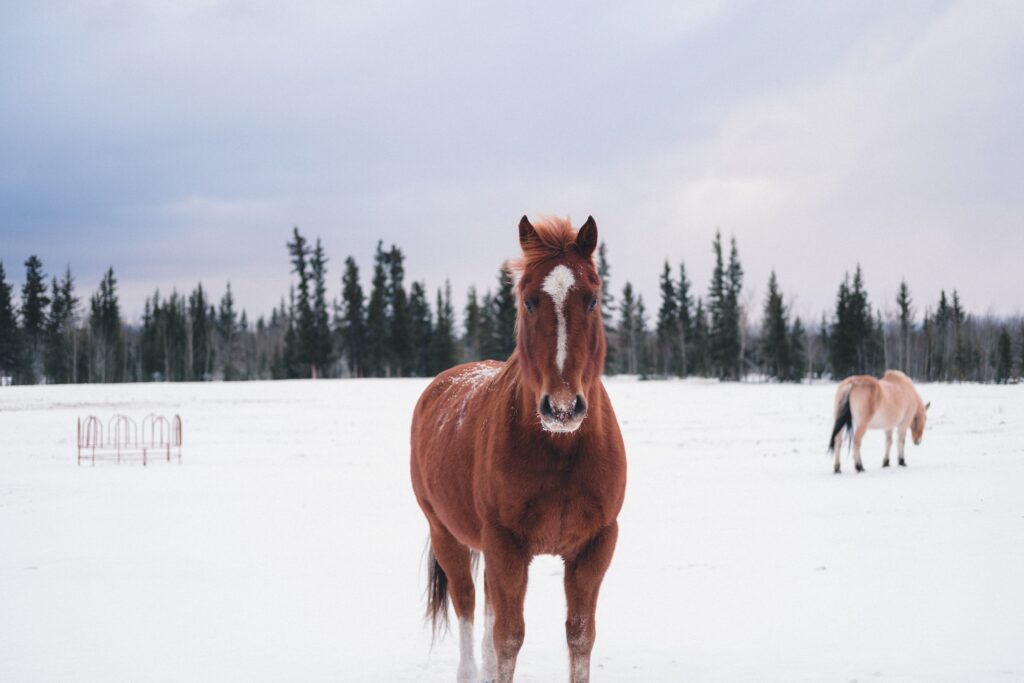
Winter Skin Issues
Grooming gives you a chance to to address specific skin issues that can occur due to the weather changes. Here is how to address and prevent some common winter skin issues in horses.
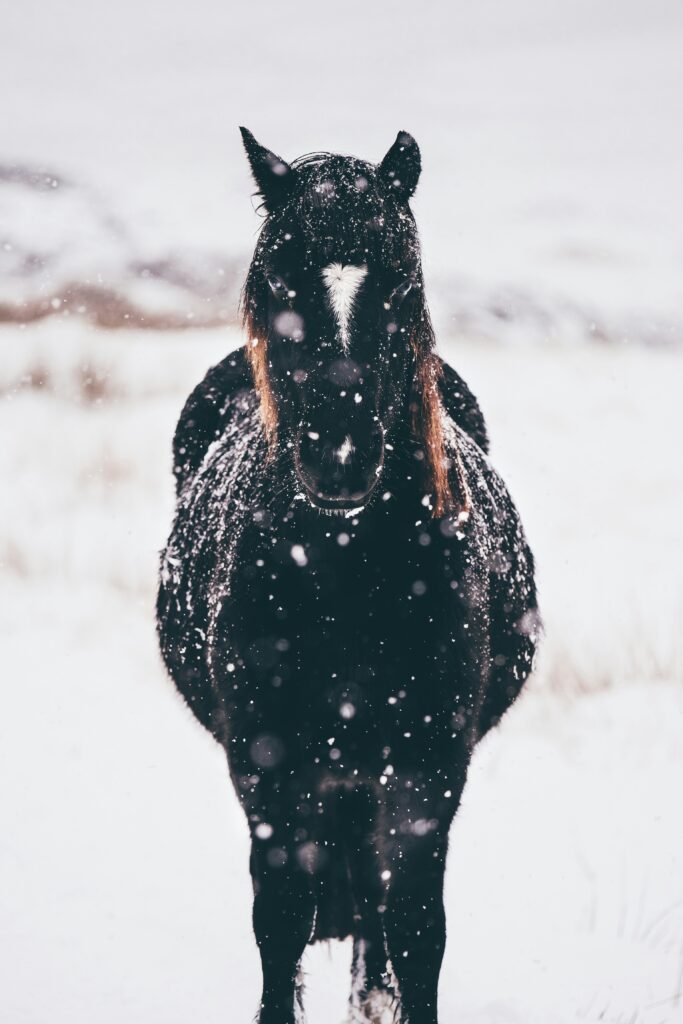
Managing Manes And Tails
Manes and tails require more care and attention in the winter. They often get tangles and show breakage if not properly cared for.
Make sure your are regularly grooming your horse’s manes and tails so dirt doesn’t build up. This will also help with tangles and overall health of the hair.
Use detangling products to help with grooming and combing through knots. This will reduce breakage in the mane and tail.
You can braid the mane and tail so it is out of the way. Braiding can help prevent it from tangling and accumulating dirt.
If your horse spends a lot of time outside braiding can be a great way to maintain your horse’s mane and tail.
Using these tips to maintain your horse’s mane and tail, your horse will stay heathy and happy all winter long.

Winter Grooming Must-Haves
Grooming horses in winter requires special attention to their needs in colder weather.
Here’s a list of must-haves for effective winter grooming:
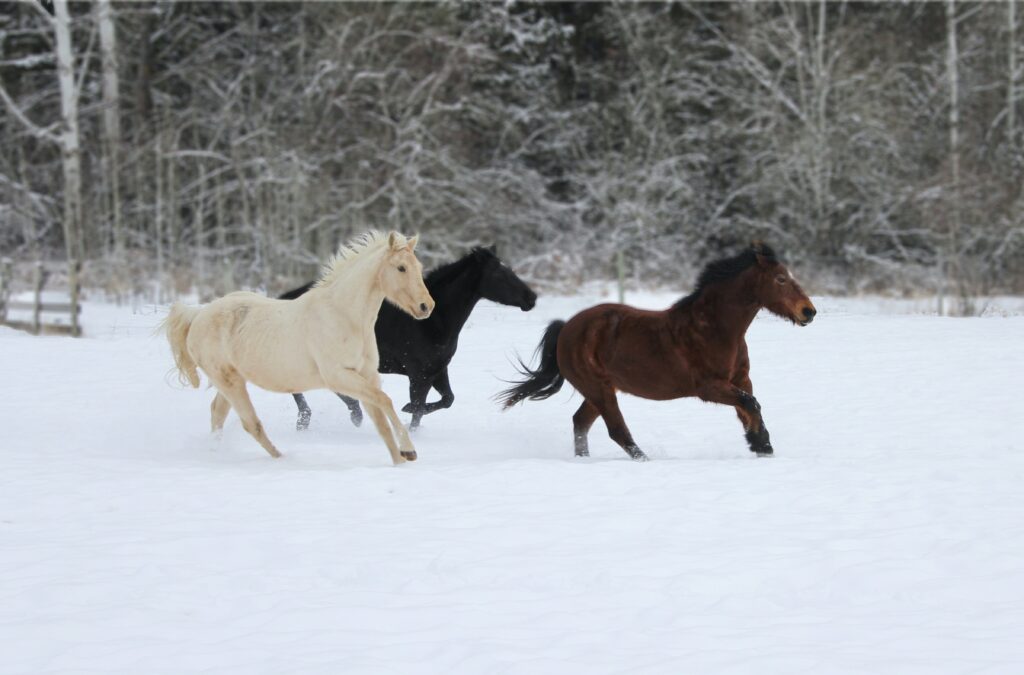
Post-Ride Grooming
Grooming your horse after you ride is a important part of your horse’s care.
After you ride, it is important you cool your horse down. This is even more important in the colder weather because if you don’t do it properly your horse could catch a chill.
If your horse is really sweaty, you can use a cooler to regulate their body temperature. Also take time to dry your horse off and make sure they aren’t wet before turning them out again.
Using these tips and making sure your horse is groomed properly after riding will make them healthier and keep them in good shape after rides.
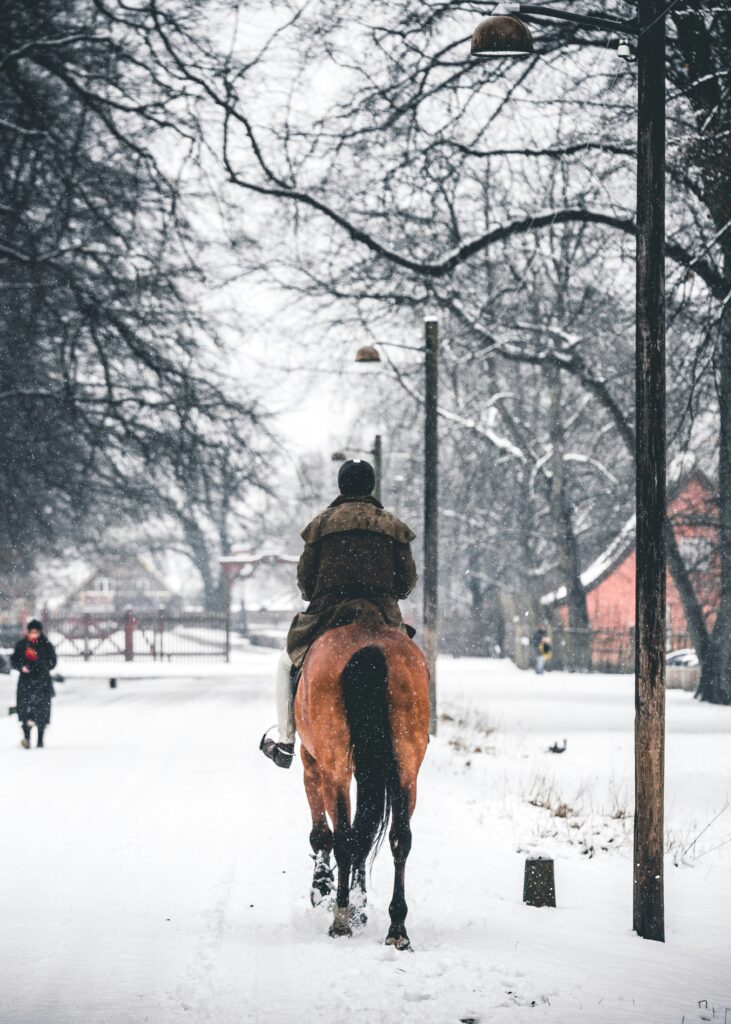
Winter grooming for your horse is not just about maintaining appearances; it’s a vital aspect of their overall health and well-being during the colder months
As the temperature drops and the elements get harsher, your horse’s grooming routine requires some adjustments.
Using these tips your horse can be healthy and look their best all winter long!

